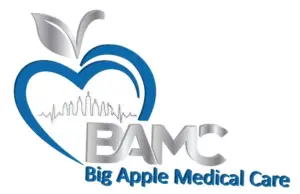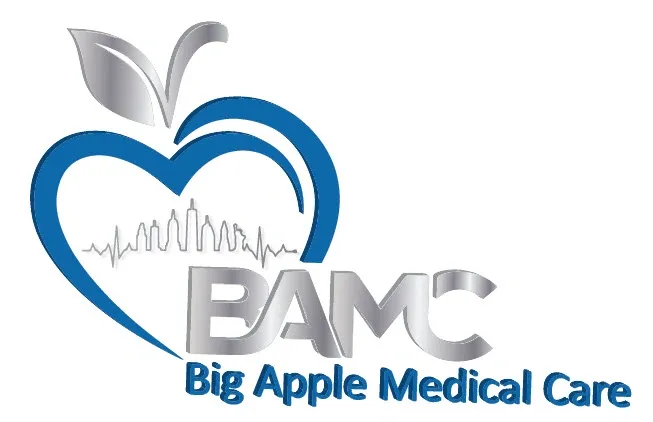Migraine Treatment: Identifying Common Causes for Better Relief

Migraines affect millions worldwide, causing debilitating pain that can disrupt daily life for hours or even days. Understanding the underlying triggers is crucial for developing effective treatment strategies that go beyond simply managing symptoms when they occur. Identifying your personal migraine triggers—whether they’re certain foods, stress patterns, hormonal changes, or environmental factors—can dramatically improve your ability to prevent attacks and reduce their severity.
Headache specialists recognize that migraine treatment isn’t one-size-fits-all, which is why diagnostic precision matters. At Big Apple Medical Care, doctors work with patients to create individualized treatment plans based on their unique migraine patterns and triggers. Their comprehensive approach includes both preventative measures and acute treatment options tailored to each patient’s needs.
Migraine headaches often follow patterns that patients may not initially recognize without proper tracking and analysis. Healthcare providers can help patients implement tracking systems to identify correlations between lifestyle factors and migraine episodes, creating a roadmap for more effective prevention and treatment.
Understanding Migraine Causes
Migraines stem from complex neurological processes involving brain chemistry, neural pathways, and environmental factors. Identifying the specific causes of migraines is crucial for developing effective treatment plans and prevention strategies.
Common Migraine Triggers
Environmental factors frequently trigger migraine attacks in susceptible individuals. Bright or flickering lights, loud noises, and strong smells can stimulate the trigeminal nerve, initiating the migraine cascade.
Weather changes, particularly barometric pressure fluctuations, affect many sufferers. Studies show approximately 50% of migraineurs report weather sensitivity.
Dietary triggers include alcohol (especially red wine), aged cheeses, processed foods, and foods containing MSG or artificial sweeteners. Caffeine can trigger migraines, though paradoxically, caffeine withdrawal is also a common trigger.
Stress represents one of the most reported triggers, with both acute stress and stress letdown (relaxation after stress) capable of precipitating attacks. Hormonal fluctuations explain why women experience migraines three times more frequently than men.
Sleep disruption, including both insufficient sleep and oversleeping, can trigger migraines in sensitive individuals.
Types of Migraine and Associated Factors
Migraine with aura (classic migraine) affects about 25-30% of migraineurs. These patients experience visual disturbances, sensory changes, or speech difficulties before headache onset. Genetic factors play a stronger role in this type.
Migraine without aura (common migraine) occurs more frequently and typically presents without warning signs. These migraines often correlate with environmental and lifestyle triggers.
Retinal migraine causes temporary vision loss in one eye and may indicate underlying vascular issues requiring medical attention.
Migraine with brainstem aura (formerly basilar-type migraine) involves symptoms originating from the brainstem. Vertigo, slurred speech, and double vision may occur before the headache phase.
Genetic predisposition significantly influences migraine susceptibility, with 70-80% of patients reporting family history.
Migraine Diagnosis: Identifying Underlying Causes
Proper diagnosis requires thorough medical evaluation and often includes headache diaries to track potential triggers. No single test confirms migraines, making detailed symptom history crucial for accurate diagnosis.
Brain imaging tests like MRI or CT scans help rule out other conditions rather than confirm migraines. These tests become particularly important when headaches present with unusual symptoms or don’t respond to treatment.
Blood tests may help identify underlying conditions contributing to migraines, including thyroid disorders or infections. Some specialists use genetic testing to determine potential hereditary factors, though this remains primarily research-focused.
Keeping a detailed headache journal documenting frequency, duration, intensity, and potential triggers provides valuable diagnostic information. Recording food intake, sleep patterns, stress levels, and menstrual cycles helps identify personal triggers.
When standard treatments prove ineffective, specialists may recommend further evaluation at dedicated headache centers for comprehensive assessment.
Recognizing Migraine Symptoms and Attacks
Migraine attacks present with distinct patterns and symptoms that can vary significantly between individuals. Proper identification of these symptoms is crucial for accurate diagnosis and effective treatment planning.
Symptoms of Migraine Attacks
Migraine symptoms typically progress through several phases. The prodrome phase may begin 24-48 hours before the headache, featuring mood changes, food cravings, and fatigue.
Some patients experience aura—visual disturbances like flashing lights or zigzag lines—that usually last 20-60 minutes before the headache begins. This phenomenon affects approximately 25% of migraine sufferers.
The headache phase involves moderate to severe throbbing pain, often on one side of the head. This pain frequently worsens with physical activity.
Additional symptoms during an attack include:
- Nausea and vomiting
- Sensitivity to light (photophobia)
- Sensitivity to sound (phonophobia)
- Dizziness or vertigo
- Neck pain
Severity and Frequency of Migraine
The intensity of migraine episodes varies greatly among individuals. Some may experience mild to moderate pain, while others endure severe, debilitating attacks that necessitate bed rest in darkened rooms.
Migraine frequency ranges widely—from occasional episodes (episodic migraine) occurring a few times yearly to regular attacks multiple times monthly. Weather changes, stress, hormonal fluctuations, and certain foods commonly trigger these episodes.
Duration also varies significantly. Without treatment, migraine attacks typically last 4-72 hours. Effective interventions can substantially reduce this timeframe and improve recovery.
Tracking patterns using headache diaries helps identify personal triggers and evaluate treatment effectiveness. Digital apps now make this monitoring process more convenient and accurate.
Chronic and Refractory Migraine
Chronic migraine affects approximately 2% of the global population, defined as headaches occurring 15 or more days monthly, with migraine features present at least 8 of those days, for more than three months.
This condition significantly impacts quality of life, often leading to disability and reduced productivity. Many chronic migraine patients develop medication overuse headaches from frequent use of acute treatments.
Refractory migraine represents an even more challenging variant that fails to respond to multiple preventive treatments despite adequate trials. These patients require specialized care, often involving multidisciplinary approaches.
Treatment options for these difficult cases include neuromodulation devices, Botox injections, and CGRP antagonists. Comprehensive management should address comorbidities like depression, anxiety, and sleep disorders that frequently accompany persistent migraine conditions.
Effective Migraine Treatment and Relief Strategies
Managing migraines effectively requires a multi-faceted approach tailored to individual symptoms and triggers. Treatment strategies range from fast-acting medications for acute attacks to preventive measures that reduce frequency and severity.
Acute and Abortive Treatments for Migraine
Acute treatments aim to stop migraine symptoms once they’ve begun. Over-the-counter pain relievers like aspirin, ibuprofen, and acetaminophen can be effective for mild to moderate migraines when taken early.
For more severe migraines, triptans (sumatriptan, rizatriptan) target specific serotonin receptors and can reduce pain, nausea, and sensitivity to light and sound. These medications constrict blood vessels and block pain pathways in the brain.
CGRP antagonists like ubrogepant and rimegepant represent newer options that don’t constrict blood vessels, making them suitable for patients with cardiovascular concerns.
Anti-nausea medications (metoclopramide, chlorpromazine) often complement pain relievers to address associated digestive symptoms.
For status migrainosus (attacks lasting >72 hours), emergency treatments may include IV medications, corticosteroids, or dihydroergotamine administered by healthcare professionals.
Preventive Treatment Options
Preventive medications are recommended for patients experiencing frequent migraines (≥4 monthly) or significant disability despite acute treatment. Beta-blockers (propranolol, metoprolol) reduce migraine frequency by affecting blood vessel tone and neural activity.
Anticonvulsants like topiramate and valproate sodium stabilize neural activity and prevent the abnormal brain excitability associated with migraines. Calcium channel blockers (verapamil) help regulate blood vessel constriction.
CGRP monoclonal antibodies (erenumab, fremanezumab) represent a breakthrough in preventive treatment, specifically targeting migraine pathophysiology with monthly or quarterly injections.
Botulinum toxin (Botox) injections provide relief for chronic migraine sufferers through quarterly treatments administered across specific head and neck muscle groups.
Antidepressants (amitriptyline, venlafaxine) offer dual benefits for patients with comorbid mood disorders and migraines by modulating neurotransmitters involved in pain perception.
Non-Pharmacologic Remedies and Lifestyle Adjustments
Lifestyle modifications play a crucial role in migraine management. Consistent sleep patterns help regulate brain function, while regular meals prevent blood sugar fluctuations that can trigger attacks.
Stress management techniques such as meditation, progressive muscle relaxation, and biofeedback training can reduce attack frequency. Many patients benefit from physical therapy focusing on neck and shoulder tension.
Dietary adjustments to avoid personal triggers like aged cheeses, processed foods, alcohol, and artificial sweeteners may significantly reduce migraine frequency. Adequate hydration (8-10 glasses of water daily) helps prevent dehydration-triggered headaches.
Acupuncture and massage therapy have demonstrated efficacy for some patients through controlled studies. Cold or hot compresses applied to the head or neck during attacks can provide temporary relief through pain gate mechanisms.
Emerging Treatments and When to Seek Specialist Care
Neuromodulation devices represent innovative non-pharmaceutical options. The Cefaly device delivers transcutaneous electrical nerve stimulation to the trigeminal nerve, while gammaCore stimulates the vagus nerve to abort or prevent attacks.
Calcitonin gene-related peptide (CGRP) inhibitors continue to revolutionize treatment with additional formulations in development. Gepants (small-molecule CGRP antagonists) now offer both acute and preventive options.
Patients should consult headache specialists when migraines significantly impact quality of life, when standard treatments fail, or when headaches change in character or intensity. Specialized clinics offer comprehensive treatment plans that may include combination therapy approaches.
Multidisciplinary approaches involving neurologists, pain specialists, physical therapists, and behavioral health professionals often yield the best outcomes for complex cases with multiple comorbidities.
Preventing Migraine and Improving Long-Term Outcomes
Effective migraine prevention requires a personalized approach that addresses individual triggers, implements sustainable lifestyle changes, and involves regular evaluation of treatment strategies.
Identifying and Managing Personal Triggers
Trigger identification forms the foundation of migraine prevention. Maintaining a detailed headache diary helps track potential triggers such as specific foods, environmental factors, and stress patterns. Common dietary triggers include aged cheeses, processed meats, alcohol (especially red wine), and foods containing MSG or artificial sweeteners.
Hormonal fluctuations significantly impact many female migraine sufferers. Tracking menstrual cycles can reveal patterns and allow for preventive treatment during vulnerable periods.
Environmental triggers like bright lights, strong odors, and weather changes should be documented. Once identified, developing specific avoidance strategies for personal triggers can dramatically reduce migraine frequency.
Stress management techniques such as meditation, deep breathing exercises, and cognitive behavioral therapy have proven effective for many patients in preventing stress-related migraines.
Lifestyle Modifications for Migraine Prevention
Regular sleep patterns play a crucial role in migraine prevention. Both insufficient sleep and oversleeping can trigger attacks, making a consistent sleep schedule essential.
Physical activity, when approached appropriately, serves as an effective preventive measure. Starting with low-impact exercises like walking, swimming, or yoga can help reduce migraine frequency without triggering attacks during activity.
Nutrition significantly impacts migraine occurrence. Regular meals prevent blood sugar fluctuations that can trigger attacks. Staying well-hydrated is equally important, with experts recommending 8-10 glasses of water daily.
Stress management through mindfulness practices, progressive muscle relaxation, and adequate downtime can substantially reduce migraine frequency. Even brief daily meditation sessions have shown benefit in clinical studies.
Monitoring Progress and Adjusting Treatment Plans
Consistent tracking of migraine patterns using digital apps or written journals provides valuable data for treatment adjustments. Recording frequency, duration, intensity, and associated symptoms helps identify trends and treatment effectiveness.
Regular follow-ups with healthcare providers ensure preventive strategies remain optimized. Most specialists recommend quarterly visits during initial treatment phases, with adjustments based on response.
Preventive medications often require time to demonstrate effectiveness. Patience during the first 2-3 months of a new preventive treatment regimen is essential, as benefits may develop gradually.
Non-pharmacological treatments like acupuncture, biofeedback, and neurostimulation devices can complement medication-based approaches. These alternatives may be particularly valuable for patients with medication sensitivities or those seeking comprehensive prevention strategies.
Frequently Asked Questions
Migraine sufferers often have important questions about managing their condition effectively. Below are answers to common concerns about triggers, treatments, and distinguishing migraines from other headaches.
What lifestyle strategies can help reduce migraine frequency and severity?
Regular sleep schedules, stress management through meditation or yoga, and consistent exercise routines can significantly reduce migraine occurrences.
Staying hydrated and maintaining regular meal times helps prevent blood sugar fluctuations that may trigger attacks.
Tracking triggers through a migraine journal allows patients to identify and avoid personal triggers, creating a customized prevention strategy.
Are there effective home remedies that provide immediate relief for migraine sufferers?
Cold or hot compresses applied to the neck or head can provide immediate relief by reducing inflammation and altering pain signals.
Resting in a dark, quiet room minimizes sensory stimulation that often exacerbates migraine pain.
Caffeine in small amounts may help reduce migraine pain when used early in an attack, though regular use can lead to rebound headaches.
What are the leading triggers for migraines that patients should be wary of?
Certain foods containing tyramine, nitrates, or MSG frequently trigger migraines, including aged cheeses, processed meats, and some Asian foods.
Environmental factors such as bright or flickering lights, strong smells, and changes in barometric pressure are common triggers.
Stress, both during high-pressure periods and in the “letdown” period afterward, remains one of the most reported migraine triggers.
Can hormonal changes be a significant factor in migraines for women?
Fluctuations in estrogen levels, particularly before or during menstruation, pregnancy, and perimenopause, can trigger migraines in many women.
Some women experience relief during pregnancy due to stable hormone levels, while others may see an increase in migraine frequency.
Hormonal contraceptives can either improve or worsen migraines, making it important for women to discuss migraine history with their healthcare providers.
What is the most effective prescription medication for preventing migraines?
CGRP antagonists represent the newest class of preventive medications with fewer side effects and significant efficacy for many patients.
Beta-blockers such as propranolol and anti-seizure medications like topiramate have long-standing evidence supporting their effectiveness in prevention.
At Big Apple Medical Care, physicians create individualized treatment plans that may combine different medication classes for optimal prevention.
How can one differentiate between a migraine and other types of headaches?
Migraines typically cause moderate to severe throbbing pain, often on one side of the head, and frequently include nausea and sensitivity to light and sound.
Tension headaches generally produce a band-like pressure around the head without the associated symptoms like nausea or light sensitivity.
Cluster headaches cause excruciating pain centered around one eye, occur in patterns or clusters, and last for shorter periods than typical migraines.






